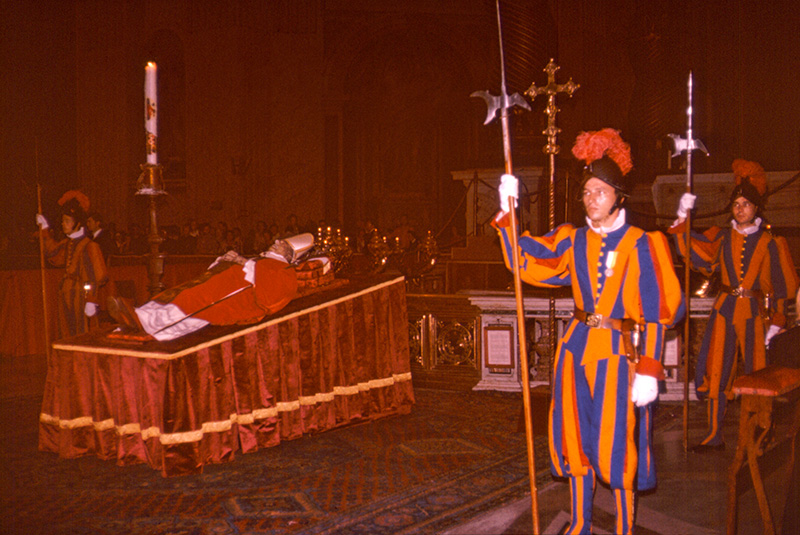This is the 3rd installment of a four-part series in which I revisit my photographic habit as a teenager 40 years ago:
After driving around the English countryside for two weeks, we boarded a hovercraft to Ostend where we joined a three week whirlwind bus tour of Europe. It was the travel equivalent of a Best of the 70’s album. For a teenager, the classic bus tour was a potentially deadly way to travel. However, this particular tour was a demographic anomaly, with travelers from all over the globe most of whom were young families or young singles. There were people from Australia, New Zealand, Malaysia, Singapore, Montreal, the Bronx, a family from Utah, and a young couple (and his sister) from Iran. The mix of people made for lively conversation and proved as interesting as the sights along the way.
A girl from Singapore insisted I was Mark Lester, the Artful Dodger in Oliver! and I was annoyed when my parents told her otherwise. At one stop, my dad sent me to fetch a habitually tardy woman from Australia and later apologized because the woman latched on to me for the rest of the trip. I didn’t mind. The woman showed me the scars on her hands and told me how, as a young woman in England during the war, she had been boiling water for her tea when a bomb exploded by her house. The explosion splashed boiling water all over her. I thought it was a quintessentially English injury, but, as a polite Canadian boy, I held that thought to myself and simply listened, which of course only encouraged her.
The Iranians, Hommie and Peri (not sure about the spelling) were young school teachers. They had brought Hommie’s younger sister, Shari, along for the trip. Every day, Shari wore a fresh pair of multi-coloured bobby sox and looked as if she had stepped from the set of Grease (which had just been released a month earlier). From them, I formed a definite impression of what life was like in Iran: its young people enthusiastically embraced Western culture. Say what you will about the Shah, he encouraged an openness with the West. Even then, Iran was in a state of unrest and, one evening, Shari began to cry, wondering what would happen to her country. The big American from Utah, wearing his cowboy hat and string tie, put an arm around her shoulder and said: “Don’t you worry. Everything’ll be all right.” I sometimes wonder what happened to Shari. If she’s still alive, I somehow doubt she wears bobby sox.
I don’t remember the precise route of our bus tour, but I remember certain cities along the way: Brussels, Cologne, Innsbruck, Lucerne, Venice, Naples, Rome, Florence, Paris. We drove around the Atomium in Brussels, touched bullet holes in the exterior walls of Cologne’s Cathedral, gawked at the Rococo finishings of a church in Innsbruck, had a snowball fight on Mount Titlis with a woman from Australia who’d never seen snow, went for a gondola ride in Venice, gazed at the cobalt waters of a grotto in Capri, and then we arrived in Rome.

I enjoy reading contemporary authors whose experience intersects with my own. One such author is David Bezmogis. For example, one of his stories in the collection, Natasha and Other Stories, is set in an apartment building on Finch Avenue West in the hollow between Bathurst and Dufferin. I was born in the hospital up the hill towards Bathurst. My mother taught at the elementary school around the corner on Wilmington. He tracks familiar ground which adds a dimension to my reading. His first novel, The Free World, tells the story of a Jewish Russian family trying to emigrate to North America and finding itself in limbo in Rome during the summer of 1978. Part of the backdrop for the narrative is the fact that Pope Paul VI died and the city was crowded with the faithful, first as they mourned their leader and later as they waited for the College of Cardinals to select a successor. As I read the novel, I began to sit up and pay attention rather than simply skim the pages as I sometimes do. I was there! I remember the crowds. I remember what it felt like. Bezmogis’ (non-fictional) family immigrated to Toronto from Latvia, and, for all I know, may have come via Rome. However, given that he is ten years younger than me and would have been five at the time, I highly doubt that his account in The Free World is novelized personal testimony. He may have been there. He may even have had a feel for what was going on. But I expect he relied on other sources for his account. Still, I was there!
While in Rome, we did as the Romans do, and lined up to file past the body as it lay in state. Although not Roman Catholic, it seemed necessary. After all, how often do you get to see a dead Pope? If I had closed my eyes and focused solely on the mood of the crowd, I would have sworn that I was standing in line for Disneyland’s Pirates of the Caribbean. We had inquired and learned that while photography was generally prohibited in St. Peter’s Basilica, the ordinary rules didn’t apply when the seat was vacant. Accordingly, I pushed as close as I could and got a photograph of the defunct Pope Paul VI lying on his bier on a hot summer’s day and turning a greenish hue. A Swiss Guard gave me a proper shove. I grew indignant. After all, it was my right. The signs said it was my right. In retrospect, I think I was rude. Had it been anyone else’s funeral, I wouldn’t have had the gall to photograph the corpse. Why should this be any different? In my defence, I was a tourist. And like most tourists, I had temporarily lost my mind.